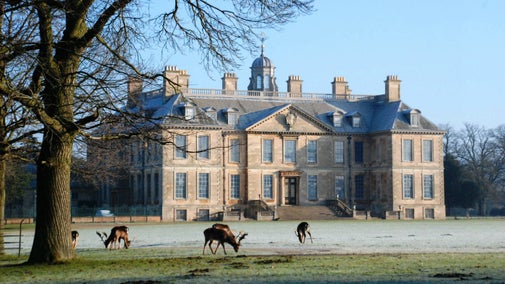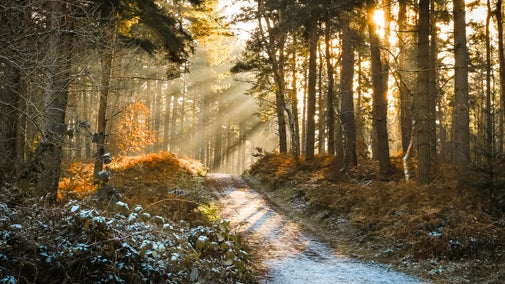Belton Pleasure Grounds Walk
Nottinghamshire & Lincolnshire
Pleasure grounds were very popular in the mid-to-late-18th century as ‘naturalised’ extensions to more formal gardens. The idea was to bring walkers closer to nature, via woodland paths that meander past unusual trees, water features and follies. You can collect a gardens walk map from the team on arrival or from the garden entrance.
Near to
Belton EstateStart point
Belton Estate, Grantham, Lincolnshire NG32 2LS.Trail information
*Mostly firm, flat paths. For further details, please see Terrain section. The paths around the ponds are uneven, unsurfaced and seasonally muddy.
**This walk is accessible for wheelchairs, trampers and pushchairs. The paths around the ponds are uneven, unsurfaced and seasonally muddy. For further details, please see Access section.
***Dogs welcome on short leads. For further details, please see Facilities section.
Admission charges at Belton
Normal admission charges or National Trust membership applies when accessing this walk, please stop by the Admission Points or visit the Information and Accessibility Hub. You can also collect a gardens walk map from the team on arrival.
More near here
Belton Estate
Exploration and relaxation for the whole family

Belton Park walk
This circular walk at Belton Park passes key features of ancient woodland and the site of a deserted medieval village.

Belton Estate Riverside walk
A short riverside walk along the River Witham in Belton Park. Lincolnshire.

Get in touch
Our partners

We’ve partnered with Cotswold Outdoor to help everyone make the most of their time outdoors in the places we care for.
You might also be interested in
Walking
Explore some of the finest landscapes in our care on coastal paths, accessible trails, woodland walks and everything in between. Find the best places to walk near you.

Cotswold Outdoor: our exclusive walking partner
Learn about the National Trust’s ongoing partnership with Cotswold Outdoor. Find out how they help us care for precious places and the exclusive discount available for National Trust supporters.

Staying safe at National Trust places
The special places in National Trust care sometimes come with a few risks for visitors, be it coastline or countryside. Find out how to keep safe throughout your visits.

Follow the Countryside Code
Help to look after National Trust places by observing a few simple guidelines during your visit and following the Countryside Code.

Exploring the estate at Belton
Explore 1,300 acres of parkland at Belton and find out more about the wildlife you may see along the way, including the herd of historic fallow deer.

Eating and shopping at Belton
Rest and refuel in a historic setting or treat yourself to something special to take home. Find out about our dog-friendly café and other places to eat and shop.

Visiting Belton with your dog
Belton is a three pawprint rated place and offers plenty of opportunities for bounding, jumping and sniffing for dogs. With 1,300 acres to explore, come and join us for a wander with your four-legged friend.

Walking in Nottinghamshire and Lincolnshire
From the parkland, woods and lakeside views of Clumber Park to the ancient woodland around Belton House, discover where to go for the best walks in Nottinghamshire and Lincolnshire.


